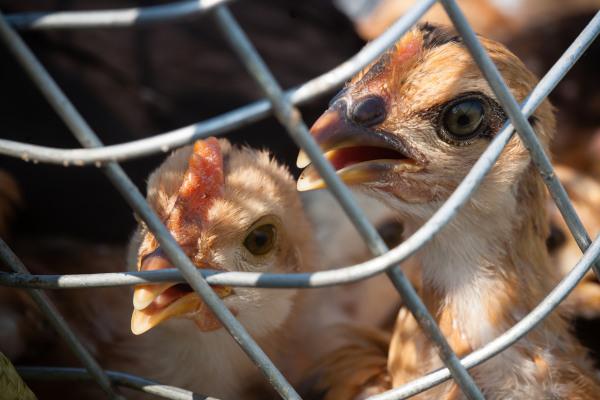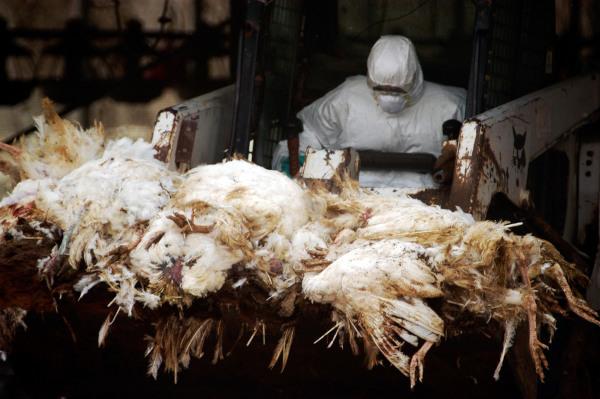THE bird flu, also called avian influenza or chicken flu, is a result of infection of birds by virus influenza, that is, the virus that causes influenza. Eventually the disease affects human beings and can even cause their death. Avian flu usually infects people who have direct contact with the animals patients, such as professionals working on farms.
What is influenza or flu?
Influenza or fluis infection caused by pinfluenza virus link and that affects the respiratory system. The disease causes symptoms such as fever, malaise, headaches, muscle pain and dry cough. Complications of the disease occur mainly in elderly people, children, pregnant women and people with comorbidities.
The flu can be prevented through vaccination, however, the vaccine does not protect against all types of influenza. Therefore, it is essential that constant studies are carried out in order to identify which viruses are circulating.
Read more: Flu vaccine - it is an important weapon against this disease, which kills several people annually
What is bird flu?
Avian flu is a Influenza virus disease in birds. The disease, as well as in humans, causes breathing problems, triggering sneezing, coughing and runny nose in these animals. In addition, it can cause pneumonia, difficulty in walking, swelling of the crest and dewlap, hemorrhage in muscles, and decreased egg laying.
The disease is responsible for the high mortality of birds, being observed on some occasions the death of these animals even before the development of symptoms. THE lethality of bird flu, in some cases, comes close to 100%.

Avian flu can infect different species, however, the main reservoirs of the viruses that cause avian flu are the wild aquatic birds. These birds can infect domestic birds, and transmission occurs mainly through the airways and feces.
A wild bird can contaminate a domestic bird mainly when it is raised free and shares a reservoir. of water with wild birds or makes use of water reservoirs that may be contaminated by bird excreta wild. It is noteworthy that the disease can spread due to migratory bird movement as well as to international live bird trade.
Treatment for birds with avian flu does not yet exist. As it is a disease of great transmission power, infected animals or animals that have had contact with sick animals must be sacrificed. In addition, the carcasses must be properly disposed of, and the farms must be disinfected. People who have had contact with these birds must also be monitored.
Read too: 10 tips to prevent colds and flu
What type of influenza virus affects birds?
There are three types of influenza: A, B, C and D. Types A and B are responsible for seasonal epidemics in humans, whereas types C are not. Influenza D was identified in 2011 and is not capable of infecting humans. Type A influenza viruses are classified according to the proteins found on its surface: hemagglutinin (H) and neuraminidase (N). A well-known type A influenza virus is the A(H1N1)pdm09, responsible for the first pandemic of influenza in the 21st century, in 2009.
The viruses responsible for causing avian flu are type A influenza, being the H5 and H7 subtypes of high pathogenicity. The main viruses causing avian flu are H5N1 and H7N7. In 2021, China reported the first case of avian flu caused by the H10N3 strain, which has a low pathogenicity and low risk of spreading on a large scale. In birds, types B and C do not occur.

Can bird flu infect humans?
Eventually the avian influenza virus can infect humans and even take them à death. This contamination occurs when we have direct contact with infected birds or their faeces, representing a risk for workers in farms and slaughterhouses.
The first bird flu epidemic that affected human beings occurred in 1997 in Hong Kong. At the time, the disease triggered the hospitalization of 18 people, with 6 deaths. Later, other cases were registered, with a greater number of reports of the disease being observed from 2003 onwards.
Avian flu causes fear because of a lethality of about 60% in humans. Therefore, it is important that outbreaks of the disease are controlled quickly.
Image credit
|1| Chameleons Eye / Shutterstock.com
By Vanessa Sardinha dos Santos
Biology teacher
